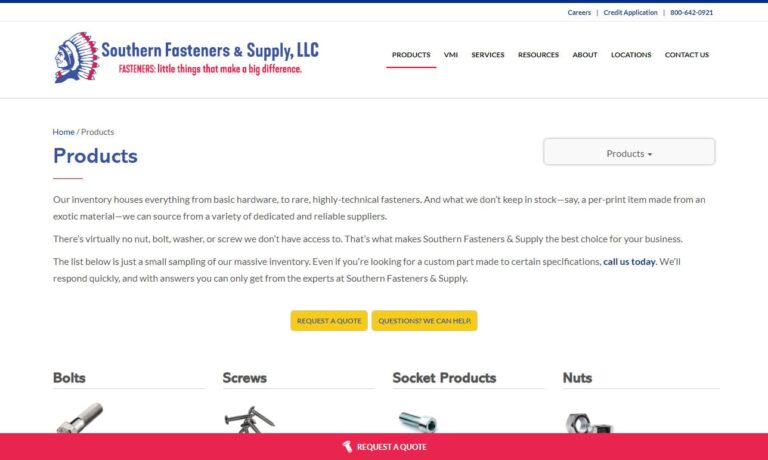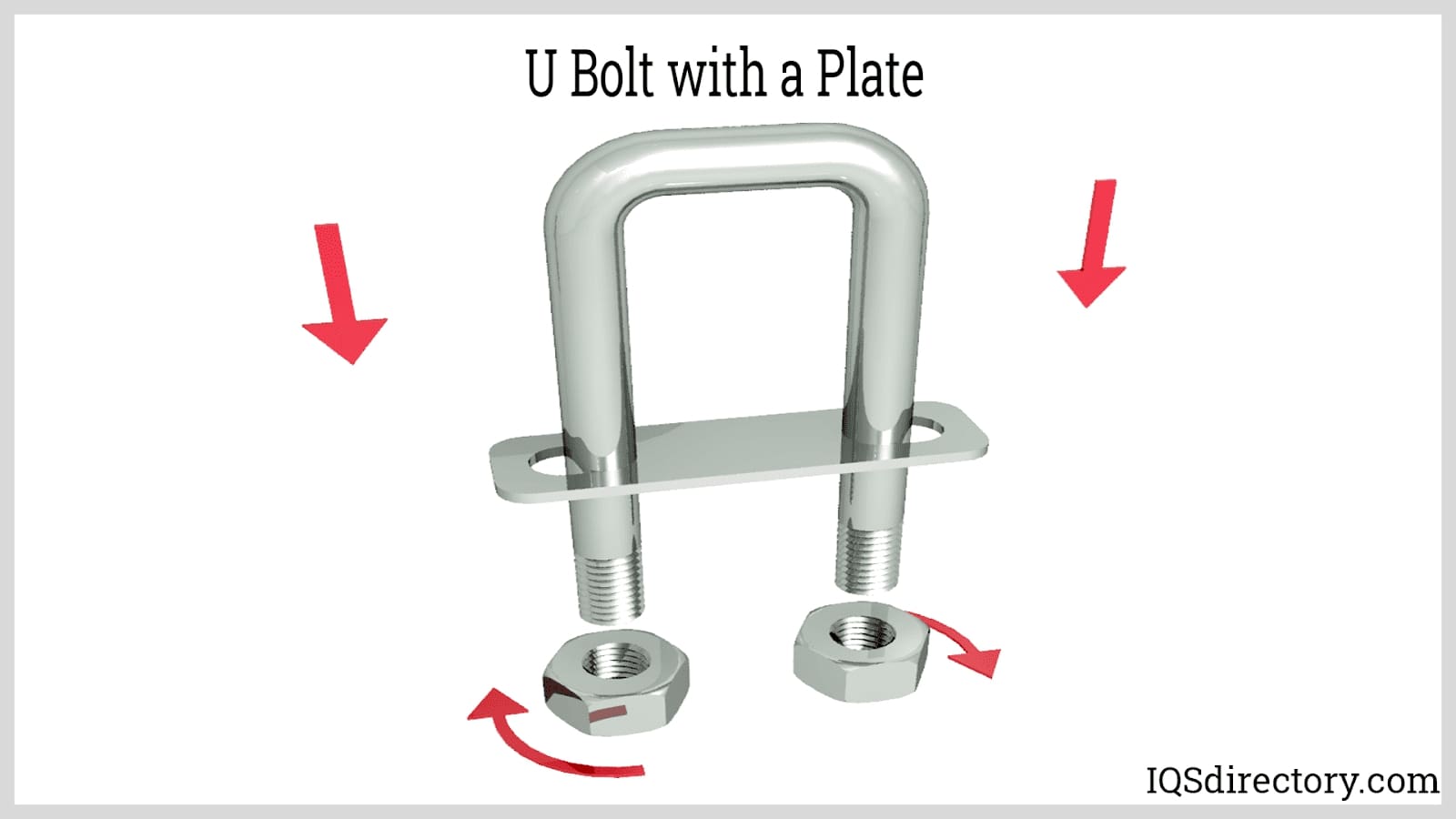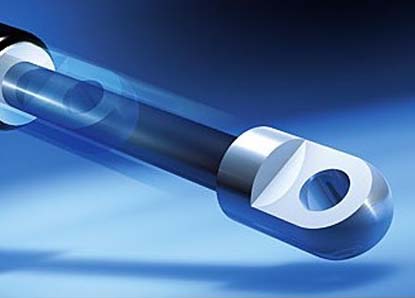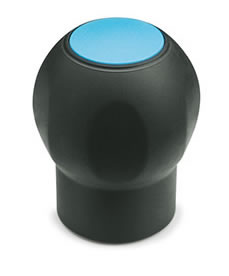With more than 130,000 commercial and industrial grade fasteners in inventory, our wide distribution network is positioned to get you the parts you need fast. Whether we’re keeping your bins full with a Vendor Managed Inventory Program or rushing emergency replacement parts with 24-hour on-call service, you’ll know that we’ve got you covered. Our HQ’s quality system is certified to AS9120 ...

At Blue Ribbon Fastener, we specialize in providing high-quality bolts and fastening solutions tailored to meet the demands of various industries. With a commitment to precision, reliability, and durability, we ensure that our products exceed performance expectations in even the most challenging applications. Our extensive selection includes a wide range of bolts, each manufactured to exact...

Delta Fastener Corp. supplies headed fasteners from only quality manufacturers. Our huge, readily available selection includes industrial bolts, nuts, washers, screws, etc. in a wide range of metal types and grades. Check out our online catalog or give us a call today for industrial bolts and more!

P&R is a manufacturer of industrial fasteners, specialty fasteners, automotive fasteners, stainless steel fasteners, aerospace and electronic fasteners. We provide over 60 years of experience in designing quality industrial fastener products. Give us a call so we can work together.

Chicago Nut & Bolt specializes in nonstandard products such as industrial bolts, stainless steel bolts, carriage bolts, titanium bolts, mil spec bolts and alloy bolts in any quantity. We will supply any shape or size depending on your requirements. We assure quality products and on-time delivery.

More Stud Bolt Manufacturers
Unlike many types of bolts, this particular style is not driven into an object or surface, but passed completely through. Nuts or flanges on either end of the bolt then hold the two objects firmly together. The ability to adjust the tightness is a key element lending to the popularity of the stud bolt in a variety of applications.
Engineering, motor, automotive, petrochemical and nuclear industries all make use of these bolts which can be specially contoured to distribute stress evenly, reducing the occurrence of breakages. Internal combustion engine cylinders, inspection covers, tank lids, car wheels and even domestic gate latches use this simple but effective design. While the dual ended nature of the stud bolt is one of its greatest assets, it can also be use as an anchor bolt in civil and architectural engineering.
This is accomplished through cast-in-place techniques that insert one end of the rod into setting concrete. The threaded end provides added resistance to pullout and machinery or other objects may be fastened to the exposed threading with a single nut or flange. The materials used for stud bolts and corresponding nuts and flanges depend largely on the use, though steel alloys are the industry standard. Zinc and cadmium plating are common finishes that enhance the corrosion and environmental resistance of steel.
The manufacturing process used to create stud bolts is similar to that of other bolt types. A steel wire rod is first heated consistently for an extended period of time and all rust particles are removed. If needed, the metal is coated for added protection. Cold forging is then used to shape the rod at room temperature and the rod is forced through dyes at high pressures to be shaped into long perfectly round rods. Once cut down to the desired length, cold forging is again used to implement high pressure rollers which press in the thread pattern.
In stud bolts, threading is either pressed along the entire rod, or on equal portions of each end, leaving a smooth center segment. The finished bolt is then ready for use in a variety of applications. A pilot hole is made in each of the objects or surfaces to be joined and the rod is inserted. A nut or flange is then tightened on each end to create the desired clamping force. A wrench, spanner or pliers may be used when tightening must be high and precise. Stud bolts with a smooth center fragment should be considered carefully.If a tight fit is desired than this portion must have a width the same or smaller than the combined width of the articles to be fastened. Alternatively, a wider segment allows the surfaces to "float," providing a degree of give. It is important to consider the materials to be fastened as well as the strength and corrosion resistance required of the bolt materials. Other considerations include the bolt length and diameter.












 Bolts
Bolts Fasteners
Fasteners Gas Spring
Gas Spring Handles
Handles Hinges
Hinges Latches
Latches Locks
Locks WIre Hooks
WIre Hooks Castings & Forgings
Castings & Forgings Bulk Material Handling
Bulk Material Handling Electrical & Electronic Components
Electrical & Electronic Components Flow Instrumentation
Flow Instrumentation Hardware
Hardware Material Handling Equipment
Material Handling Equipment Metal Cutting Services
Metal Cutting Services Metal Forming Services
Metal Forming Services Metal Suppliers
Metal Suppliers Motion Control Products
Motion Control Products Plant & Facility Equipment
Plant & Facility Equipment Plant & Facility Supplies
Plant & Facility Supplies Plastic Molding Processes
Plastic Molding Processes Pumps & Valves
Pumps & Valves Recycling Equipment
Recycling Equipment Rubber Products & Services
Rubber Products & Services